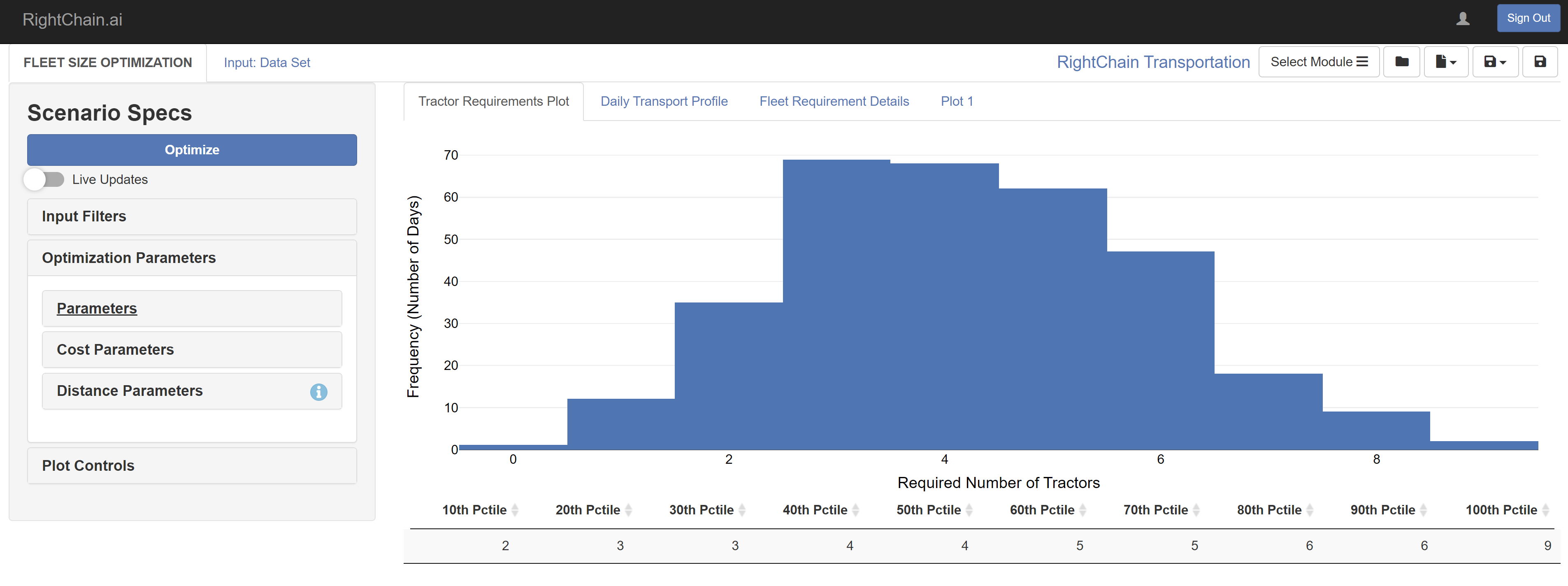Fleet Size Optimization
The objective in fleet sizing is to employ through ownership, lease, and/or rental the fewest number of vehicles and containers possible to meet the hourly, daily, weekly, monthly, and annual shipping requirements. The decision is much like the decision of how much inventory to make available to customers. Increasing availability yields fewer lost sales, improved customer service, and higher inventory carrying costs. In fleet sizing, increased availability yields fewer lost sales, shorter customer cycle times, improved customer service, but higher fleet costs. The graph in illustrates the tradeoffs in play and suggests the optimal solution is the minimum fleet size which satisfies a pre-specified level of customer service during peak and average periods.

Fleet Sizing Analysis

RightChain Fleets optimization of a large furniture delivery fleet
This same analysis should be performed for each type of vehicle or container chosen as a part of the fleet operations. These fleet sizing projections should be developed a few times during the year and at any time when a major shift in demand patterns occurs. In some cases, the cost of vehicle shortages can be estimated and a cost of shortage vs. cost of ownership analysis can be made to determine the optimal fleet size. The overall fleet requirements can be minimized by (1) utilizing standard and modular sized cases, pallets, and transport containers; (2) aggressively monitoring fleet utilization levels over each segment of the transportation network during each period of the year; (3) maintaining total fleet visibility including loading times, unloading times, transit times, and maintenance times; (4) choosing low use periods to conduct routine maintenance; (5) monitoring and charging for fleet detention by suppliers, customers and/or carriers; and (6) utilizing alternative coverage means during super-peak periods to avoid carrying the burden of an over-sized fleet.